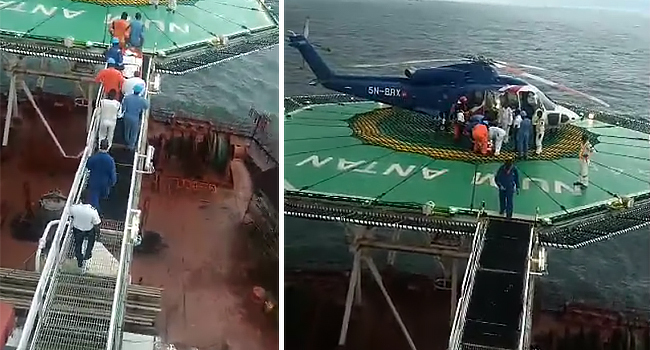A week after Eastwind Aviation’s Sikorsky SK76 helicopter crashed into the Atlantic Ocean near Port Harcourt, search and recovery efforts remain ongoing.
Despite efforts by the Nigerian military and the Nigerian Safety Investigation Bureau (NSIB), the black boxes and debris from the helicopter, which had eight people onboard, have yet to be located.
The NSIB, however, stated that it is working to deploy a Remotely Operated Vehicle (ROV) that can operate at ocean depths of up to 1,000 meters.
According to the bureau, this would enable it to conduct detailed surveys, collect environmental data, and capture critical evidence essential to understanding the cause of the incident.
NSIB also said that its combined team of searchers was yet to locate critical components like the black box, Flight Data Recorder (FDR) or Cockpit Voice Recorder (CVR).
Capt. Samuel Caulcrick, the former Rector of the Nigerian College of Aviation Technology (NCAT), Zaria, described the situation as an “embarrassing moment.”
“I am bothered about our inability to find the debris and black boxes of the crash. This is so because we don’t have a search and rescue unit. This is supposed to be a part of a strong unit in the aviation industry because we ought to have sent divers down in that area.
“It is the same area where we have the rigs. So, if the divers can get to the bottom of the rig, they should be able to dive down and locate the debris and the human remains. There must be a unit in case the crash happens within our shores that can cover the black boxes scene and others. This I think should be under NSIB.
“NSIB has to be equipped; when it was the Accident Investigation Bureau (AIB), all they were doing was about aviation, but now that it is a multi-modal agency, they should be equipped more. This particular case is even in the aviation industry. We need to intensify and equip NSIB,” he told Daily Independent.
The article was originally published on Politics Nigeria.




![JUST IN: Kano Governor Yusuf Breaks Silence Amid Reports of Fight With Kwankwaso [VIDEO]](https://leaksagency.com/wp-content/uploads/2024/11/images-2024-11-07T102146.523-3sDHrp-218x150.jpeg)
